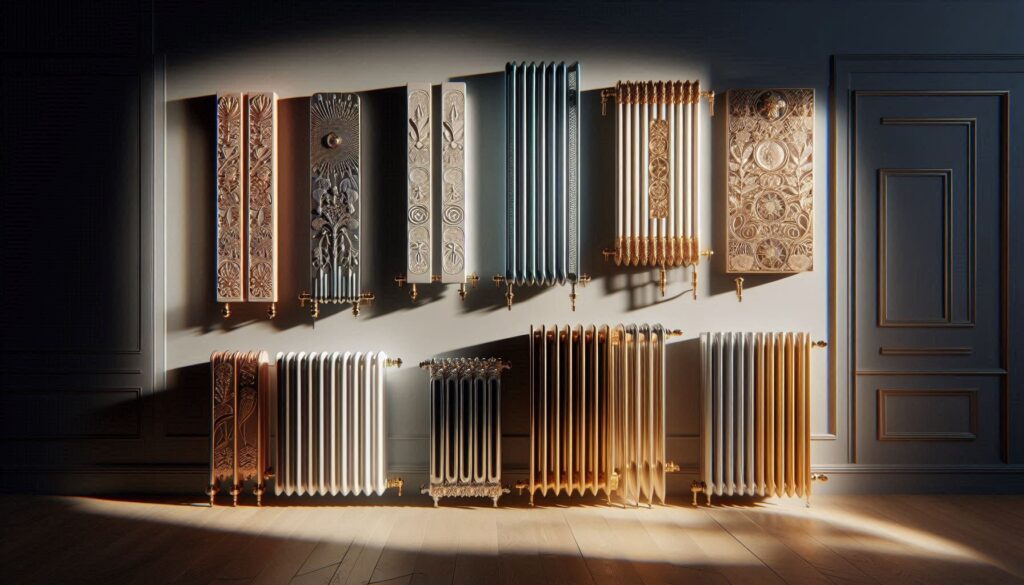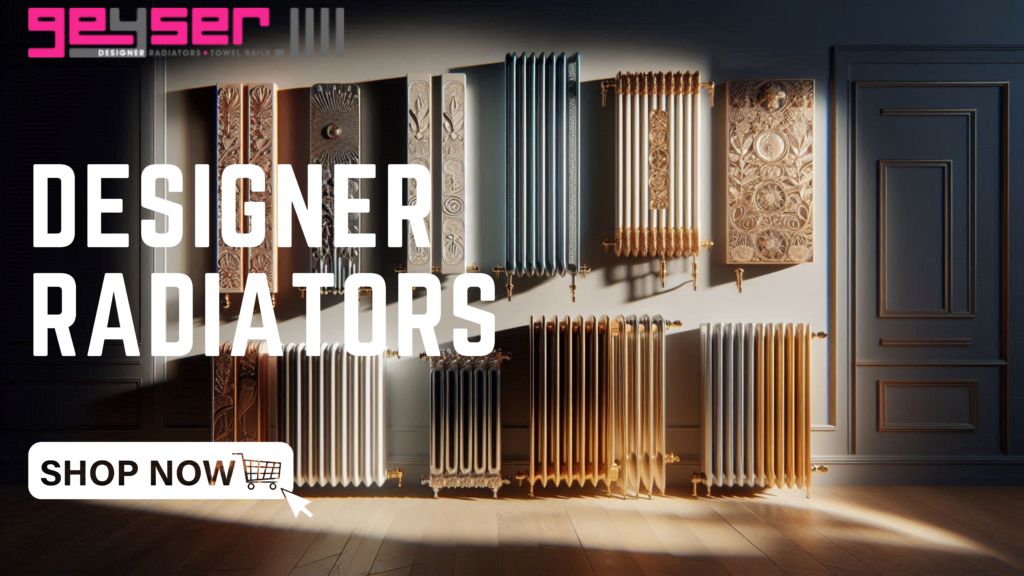
Understanding BTU Output for Your Room Size
Selecting the right radiator is essential for maintaining a comfortable and energy-efficient home. One of the most important factors to consider is the radiator’s BTU (British Thermal Units) output, which measures its heating efficiency. Ensuring the correct BTU output for your room size is critical—choose too low, and your room may never feel warm enough; too high, and you’ll waste energy and money on excessive heating costs.
To determine the correct BTU output, you’ll need to account for several key variables, including room size, insulation quality, and window placement. Start by measuring the room’s dimensions—length, width, and height—and multiply these figures to calculate the room’s volume in cubic feet or meters.
However, room volume alone isn’t enough. Insulation quality plays a crucial role; for example, older homes with poor insulation will require more BTUs to stay warm. Windows also affect heat loss, with larger or single-glazed windows requiring a radiator with a higher BTU output to compensate.
To simplify this process, online BTU calculators can be a helpful tool. By inputting your room’s dimensions, insulation quality, and window information, these calculators can estimate the necessary BTU output for your space. BTU charts can also provide general estimates based on room size, but they’re best used as guidelines rather than exact calculations.
Once you know your room’s BTU requirement, compare it with the ratings of potential radiators to ensure a proper match. This will guarantee a comfortable, energy-efficient space without overspending on heating.
- ✔️ STYLE & FINISH- These anthracite radiators are the eptiome of style. High-quality finishes and durable materials make…
- ✔️ DURABLE & BUILT TO LAST – Constructed from premium mild steel, unlike other brands who use low grade steel. Our centr…
- ✔️ DIMENSIONS & OUTPUT – (H x W): 1800 x 452mm; Projection from wall (inc brackets): 85mm; Pipe centres: 452+-5 mm; Weig…
- ✔️ COMPATIBILITY – Our flat panel designer radiators are designed to work flawlessly on all types of domestic central he…
- ✔️ GUARANTEES & CERTIFICATIONS -We’re so confident in our radiators that we provide a FREE 10 year guarantee against man…
/
Delta T Ratings: Understanding T50, T60, and T70
When comparing radiators, it’s important to understand the concept of Delta T. This refers to the temperature difference between the water entering the radiator and the water exiting it. For instance, if the water enters at 80 degrees and exits at 60 degrees, the radiator’s average temperature is 70 degrees. Subtracting the typical room temperature of 20 degrees gives you a Delta T of 50 degrees, or Delta T50.
Delta T50 is now the standard in the UK and much of Europe, aligning with modern energy efficiency standards. However, you may still encounter Delta T60 (the previous UK standard) and even Delta T70, which is less common but used by some suppliers. When comparing BTU ratings, it’s crucial to ensure you’re comparing like-for-like by adjusting for these Delta T differences.
Converting Between Delta T Ratings
To avoid confusion, here’s how you can convert BTU ratings between Delta T50, T60, and T70:
- From Delta T60 to Delta T50: Multiply the BTU by 0.789.
- Example: A radiator rated at 5000 BTUs under Delta T60 would output 3945 BTUs at Delta T50.
- From Delta T60 to Delta T70: Multiply by 1.223.
- Example: A 5000 BTU radiator at Delta T60 would provide 6115 BTUs at Delta T70.
- From Delta T50 to Delta T60: Multiply by 1.264.
- Example: A radiator with 4200 BTUs at Delta T50 would produce 5309 BTUs at Delta T60.
Why Delta Ratings Matter
When shopping for radiators, accurate BTU ratings are vital. Without paying attention to Delta T ratings, you may think you’re getting more heat output than the radiator can actually provide. For example, a radiator advertised with 10,000 BTUs at Delta T70 will be far less effective at Delta T50, potentially leaving you with a chilly room and higher heating costs.
To avoid this, always ensure you know the Delta T rating of the radiator’s BTU output, and adjust for it as needed. Most manufacturers and retailers are transparent about their Delta T ratings and can offer guidance if you’re unsure.
Material Choices: Stainless Steel, Aluminium, and Mild Steel
Radiators are constructed from various materials, each with unique benefits. The most common materials are stainless steel, aluminium, and mild steel.
- Stainless Steel: Highly durable and resistant to corrosion, stainless steel radiators are perfect for moisture-rich environments like bathrooms. Their polished appearance also adds a modern touch, but they tend to be more expensive due to their superior quality and longevity.
- Aluminium: Known for being lightweight and excellent at conducting heat, aluminium radiators warm up quickly, making them highly energy-efficient. However, they can be more prone to dents and require careful handling.
- Mild Steel: Often the most affordable option, mild steel radiators strike a balance between durability and cost-effectiveness. Available in various styles, they’re versatile, though they may rust over time, particularly if their protective coating wears away.
When choosing a radiator material, consider both your aesthetic and functional needs. Whether you value durability, energy efficiency, or budget-friendliness, each material offers different advantages.
Sizing and Installation: Getting the Right Fit
Proper radiator sizing is crucial to ensure it fits your room and provides adequate heat. Start by measuring the available space, paying attention to any obstructions like windowsills or furniture. Once you have your room’s dimensions, compare them with the radiator’s specifications to ensure a good fit.
There are also important installation considerations. Wall-mounted radiators are a popular choice due to their space-saving benefits, but ensure the wall can support the radiator’s weight when filled with water. Floor-standing radiators are an alternative for older buildings with less sturdy walls.
- White double panel Type 22 horizontal convector radiator
- Premium quality steel construction for strength and durability
- Produces a heat output of 6415 BTUs (1880 Watts)
- Dimensions: 600mm x 800mm x 103mm
- Includes blanking and bleed plug plus wall fixings – valves not included
Additionally, consider the radiator’s depth. In narrow or high-traffic areas, a slimmer model may be more appropriate to avoid obstructing the room’s layout. Allow sufficient space around the radiator for optimal air circulation to ensure efficient heat distribution.
Aesthetic Considerations: Style, Colour, and Finish
Radiators are no longer purely functional—they can also enhance your room’s aesthetic. Modern radiators often feature sleek, minimalist designs that blend seamlessly into contemporary spaces. Traditional radiators, on the other hand, tend to be more ornate and complement vintage or classic interiors.
Colour is another key factor. Radiators come in a wide array of colours, from neutral tones like white and black to bolder shades that can serve as a focal point in the room. You can also choose from various finishes, including matte, glossy, satin, and textured, to further personalize your radiator.
By carefully considering the style, colour, and finish, you can ensure your radiator complements your décor while providing efficient heating.
- Our traditional radiator is crafted from high-quality mild steel and features a anthracite powder-coated finish, which i…
- Radiator conforms BS EN442 standards,compatible with UK central heating systems.
- Dimensions: (H x W)300mm x 830mm – Double; BTU Rating:1501-1897
- Dimensions: 600 x 988mm
- BTU Rating: 3500-4000; Pipe Centre: 1070mm; Projection: 90mm
- Low carbon steel, high quality white finish
- Fixing includes: wall brackets, plug and vent
- Suitable for all UK central heating systems (tank fed or combi systems)

Making Your Final Decision
Selecting the perfect radiator involves balancing performance, size, and style. Begin by calculating your room’s BTU requirement using an online BTU calculator. From there, consider the material, size, and installation specifics to ensure your radiator fits both your heating needs and your available space.
Finally, think about how the radiator will look in your home. Whether you opt for a sleek, modern design or a more traditional model, ensure it aligns with your personal aesthetic preferences.
By following these steps, you’ll be able to choose a radiator that not only keeps your space warm and comfortable but also enhances the overall look of your home.
For more guides and information check out our main blog page




